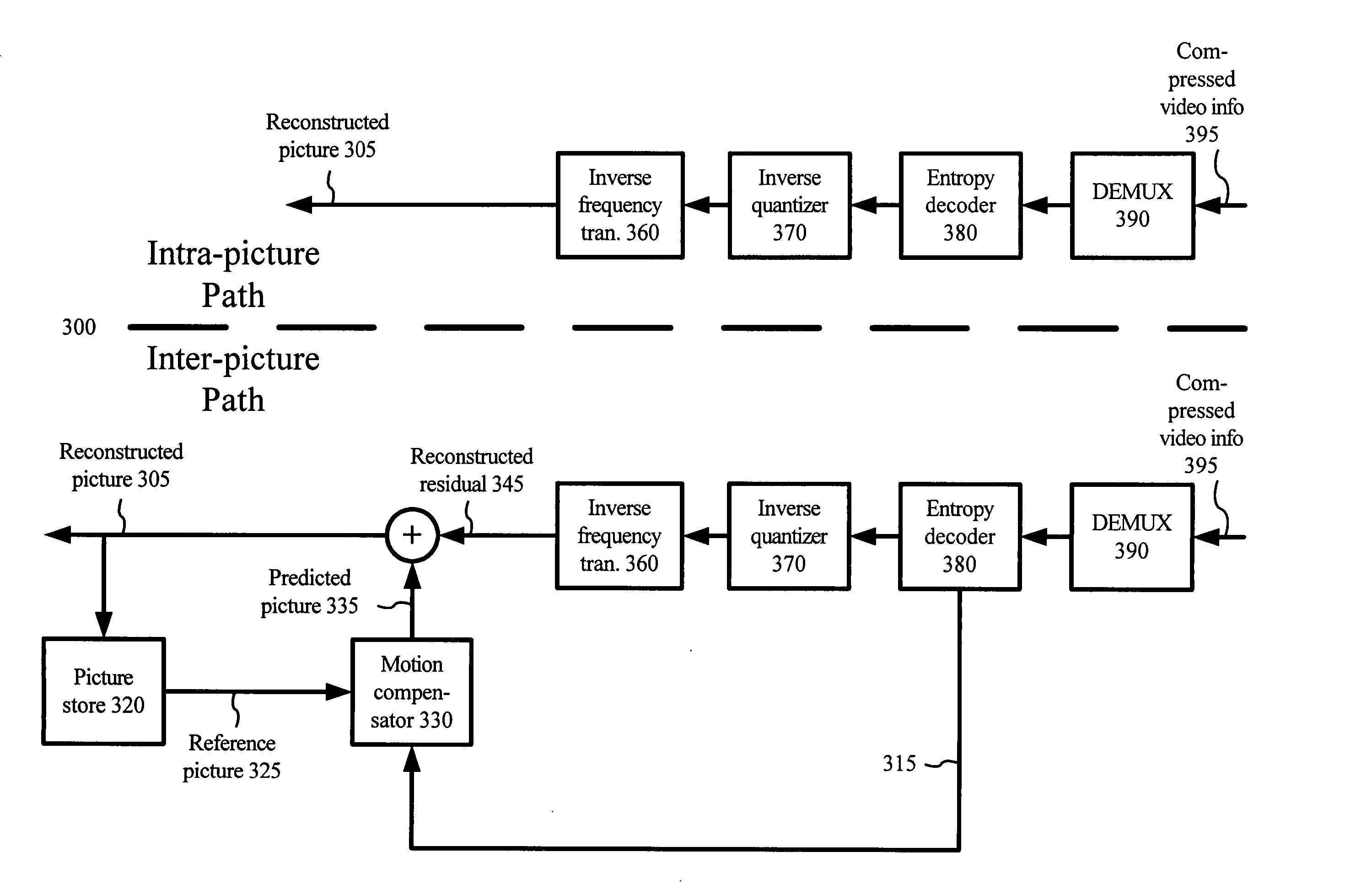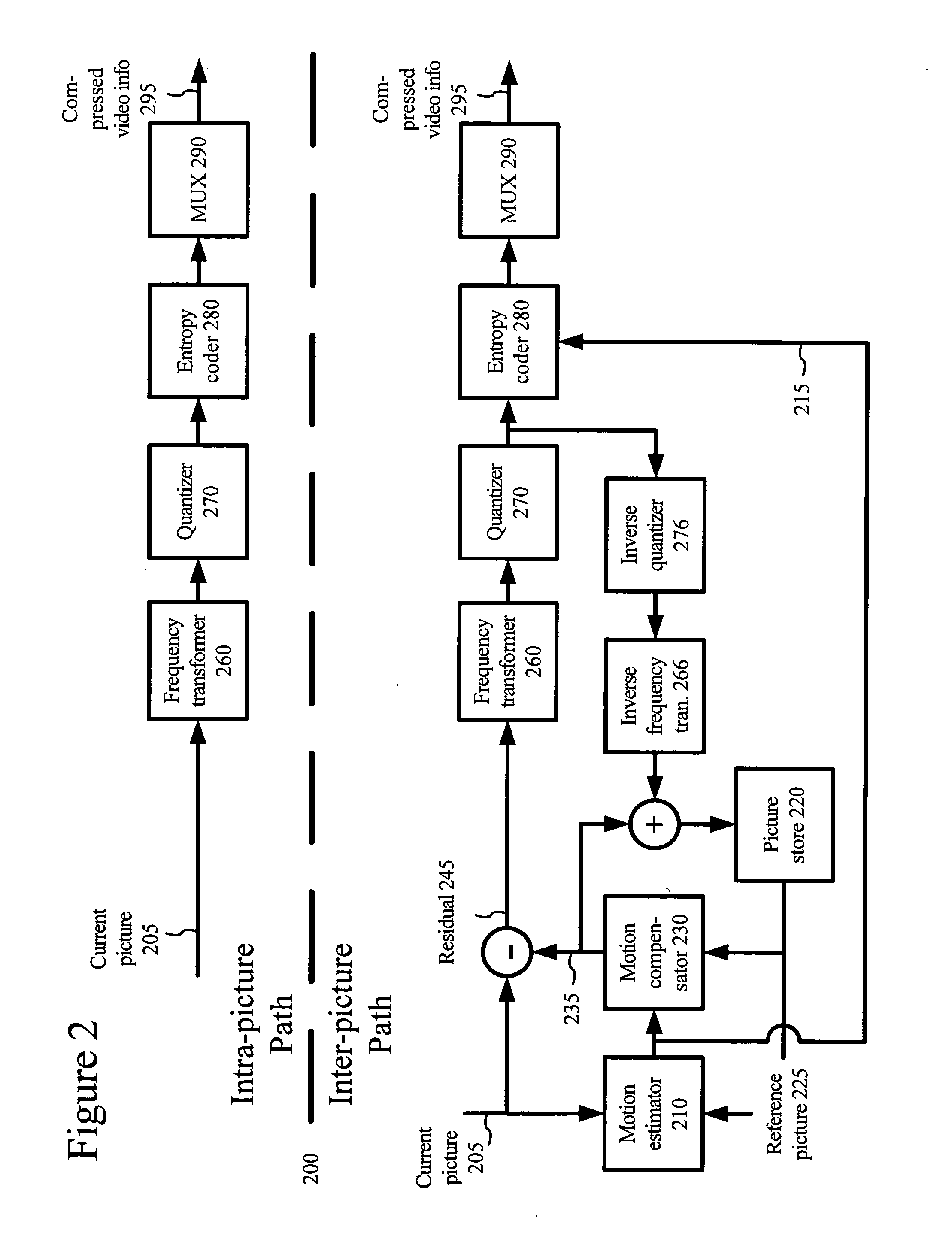Multi-layer run level encoding and decoding
a multi-layer run and encoding technology, applied in the field of entropy coding and decoding techniques, can solve the problems of lossless compression techniques reducing bitrate, reducing bitrate, and reducing the cost of storing and transmitting information, so as to reduce the size of the table, reduce the overall table size, and reduce the effect of bitra
- Summary
- Abstract
- Description
- Claims
- Application Information
AI Technical Summary
Benefits of technology
Problems solved by technology
Method used
Image
Examples
Embodiment Construction
Described embodiments are directed to techniques and tools for entropy encoding and decoding. With these techniques, a video codec reduces the bitrate associated with frequency transform coefficients or other information. In some embodiments, the codec is more efficient than simple Huffman coding of run level information, since the codec addresses the problem of probabilities greater than 50% for common run and level values. At the same time, table sizes are more limited and efficient than with joint run level Huffman coding. The codec is more efficient than the variable length coding mode of the H.264 standard, and it is faster and simpler than the arithmetic coding mode of the H.264 standard.
In some embodiments, a codec uses a multi-layer representation of run level information to efficiently represent the run parts as a set of levels and runs, and efficiently represent the level parts as a different set of levels and runs. In an example two-layer run level scheme, contiguous o...
PUM
 Login to View More
Login to View More Abstract
Description
Claims
Application Information
 Login to View More
Login to View More - R&D
- Intellectual Property
- Life Sciences
- Materials
- Tech Scout
- Unparalleled Data Quality
- Higher Quality Content
- 60% Fewer Hallucinations
Browse by: Latest US Patents, China's latest patents, Technical Efficacy Thesaurus, Application Domain, Technology Topic, Popular Technical Reports.
© 2025 PatSnap. All rights reserved.Legal|Privacy policy|Modern Slavery Act Transparency Statement|Sitemap|About US| Contact US: help@patsnap.com



